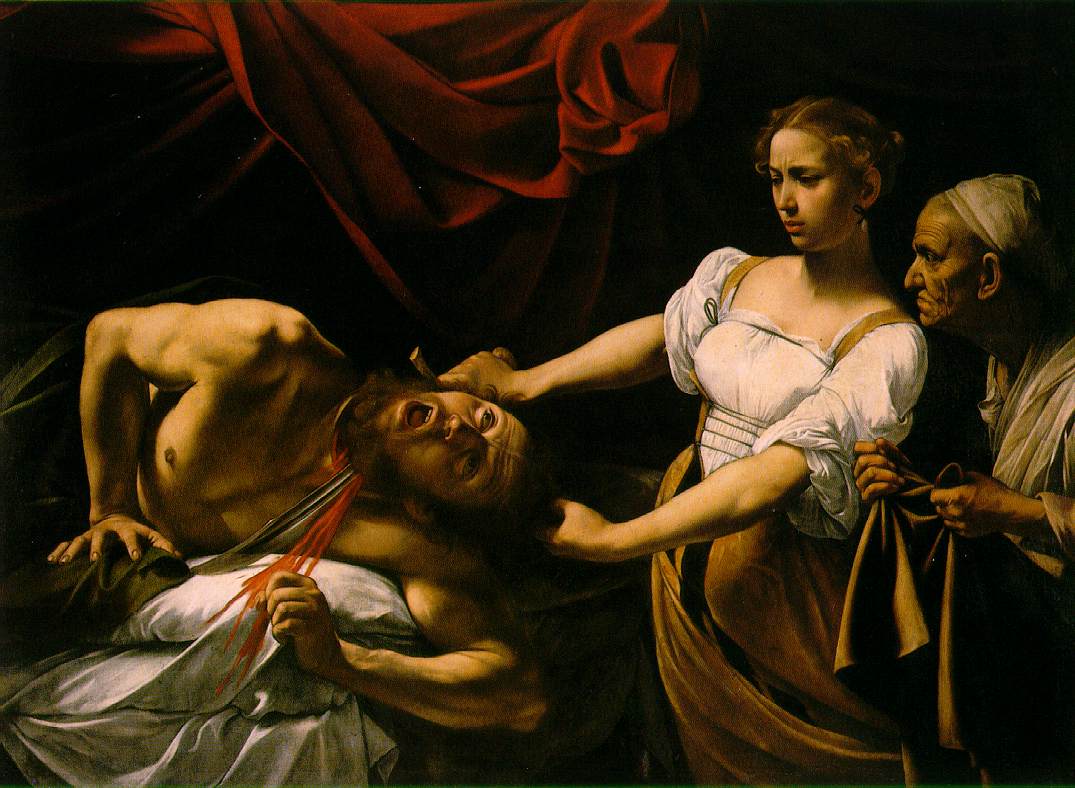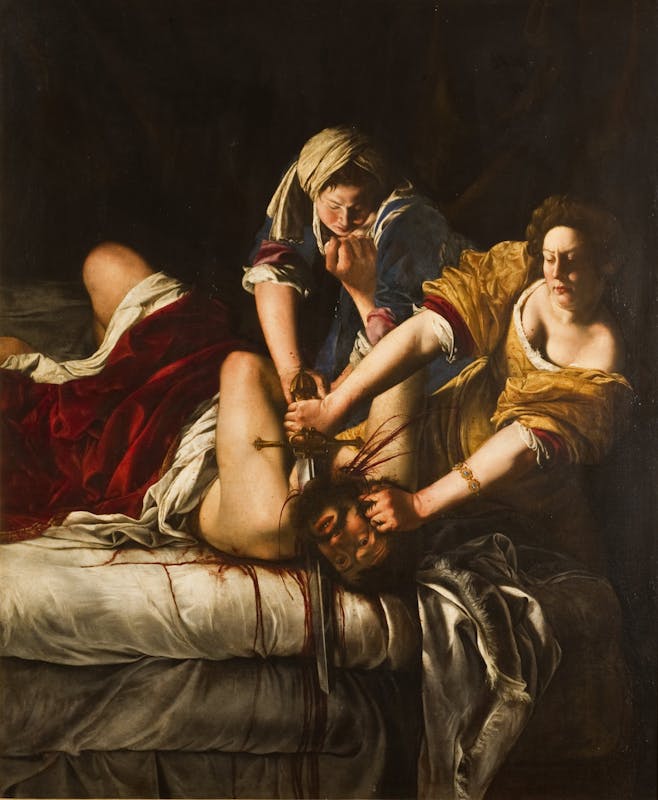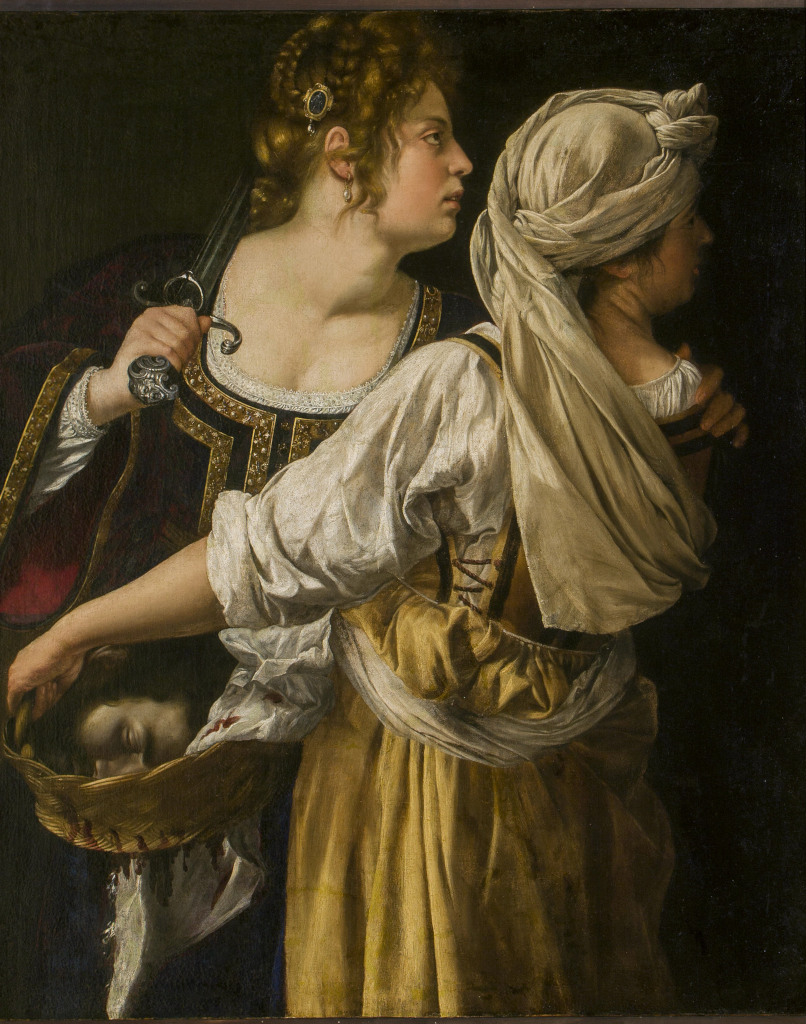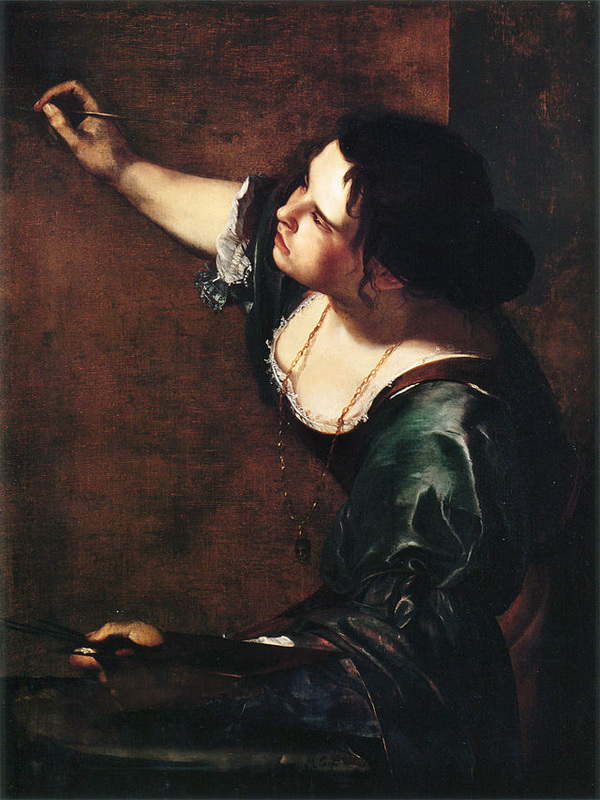This week, I wanted to focus on Artemisia Gentileschi for two reasons: not only was she a gifted painter in her own right, but she was one who was both fierce and assertive in an era where women as artists were all but invisible. She had to exhibit incredible tenaciousness and bravery to fight for this right in a time where concepts of gender equality had almost no place.
From what we know, she was heavily influenced (like her father, also a painter) by the works of Caravaggio, incorporating many Caravaggisti elements in her painted works. As an interesting side note on that, I want to include a side by side view of the Old Testament concept, The Slaying of Holofernes to show an interesting divergence in tone from where Caravaggio went. In his original work, Judith and her servant have an expression that seems to imply a sense of resigned, fearful disgust at the task set before them. The figures stand at arms length, Judith’s face almost looking as if she’s touching something vile.
In contrast, Artemisia’s depiction is fierce. Judith and her servant are not disdainful, but cold fury incarnate. In comparison to Caravaggio’s depiction of Holofernes dramatically crying up and out, Artemisia’s is brutal. Dark arterial blood pours across the scene as they both pin him, arms desperately grasping. It’s a far more ugly, violent and profoundly human moment (in my opinion) than Caravaggio’s depiction, which looks almost dramatized in comparison. Hers depicts the scene for what it is: a desperately ugly and cold moment. The figures are determined, and exert agency and power in a time where most women were relegated to being passive objects.

Judith Slaying Holofernes – Caravaggio

Judith Slaying Holofernes – Artemisia Gentileschi
This is worth touching on, as Artemisia is famed for finally giving women agency in her compositions. She survived sexual assault and exploitation at a young age, which has been covered exhaustively and I won’t really be writing about at length, but it’s important to note because it set the tone for how she depicted the figures in her compositions moving forward. She was let down by Tuzia, a tenant and witness to the assault, and many of her works would later infer a suggestion of the importance of women supporting other women. She would process this through a longer series of paintings based on the story of Holofernes, though this was indeed a small part of her body of work.
Of incredible note was also her admission to the Accademia del Disegno at the behest of Galileo Gallilei (yes, THAT Galileo!), making her the only woman to be invited at the time. This allowed her to purchase her own supplies without the aid of a male figure, a huge deal at the time. This would also introduce her to figures like Cosimo de Medici and other Florentine upper crust, propelling her to new heights borne of the back of how hard she fought for her right to paint.
Interestingly and unfairly I might add, she was a conspicuous omission from history books for almost two centuries before interest in her work was reignited in a feminist essay from the 1970s asking the question: where are all the women in art? Since then, she’s finally gained resurgence and recognition as a fearsome painter of her era and is at least receiving some of the respect she should have enjoyed from the start.



Picture sourcing:
https://www.uffizi.it/en/artworks/judith-beheading-holofernes
https://www.artbible.info/art/large/681.html
https://en.wikipedia.org/wiki/Judith_Beheading_Holofernes_(Caravaggio)
https://en.wikipedia.org/wiki/File:Danae_painting.jpg
https://thehistoryofpaintingrevisited.weebly.com/artemisia-gentileschi.html
Information sourcing:
https://thehistoryofpaintingrevisited.weebly.com/artemisia-gentileschi.html
https://www.artsy.net/article/artsy-editorial-baroque-master-artemisia-gentileschi
https://www.britannica.com/biography/Artemisia-Gentileschi

October 12, 2018 at 3:41 pm
John,
I thought you were going to cover another artist from the Baroque period as Artemisia I actually cover in my final lecture on Women in Art. While I do like your post on her I’d like you to look into another painter from that period. Also you’ve used Rembrandt’s painting of Danae here in this post. Any reason for this?
Anyhow you have excellent personal feelings and insights into the artists you cite so keep that up. So basically you owe me Baroque and Neoclassicism, Romanticism, Rococo posts now!
Jeff